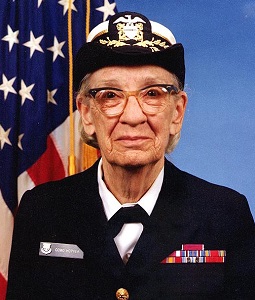
In the 1940’s, most scientists were men. This was the case until the admiral Dr. Grace Hopper came along and flipped the script.
Grace Brewster Murray was born on December 6, 1902, in New York City, New York. In 1928, Murray graduated from Vassar College with a Bachelor’s degree in mathematics and physics. She joined the Vassar faculty, but went on to study at Yale University. She earned both her Master’s in 1930 and her PhD in 1934 from Yale. Busy in her private life as well, Murray married Vincent Foster Hopper in 1930. He later died in World War II and the couple had no children.
In 1943, Grace—now “Grace Hopper”—joined the United States Naval Reserve to help American efforts in WWII. She was assigned to the Bureau of Ordnance Computation Project at Harvard University. She worked at Harvard's Cruft Laboratories on the Mark series of computers. Here, Hopper conceptualized how more people could use computers and studied how to make them programmer-friendly and application-friendly. She also pioneered the UNIVAC I, the first large scale electronic digital computer.
Hopper believed that computer programming could be written in English and adapted for typical business applications. She followed through on this then-novel idea and started to develop the B-O Compiler, later known as the FLOW-MATIC program, specifically for the Univac computer. FLOW-MATIC paved a path for the Conference/Committee on Data Systems Languages, or CODASYL, a short-range committee to develop basic Common Business Oriented Language, also called COBOL.
One member of the short-range committee said, “FLOW-MATIC was the only business oriented programming language in use. At the time COBOL development started… without FLOW-MATIC we probably never would have had a COBOL.”
For her innovations and outstanding work, Hopper earned many awards including the first Computer Science Man of the Year award from the Data Processing Management Association. When she died in 1992, the world lost a real tech trailblazer and an inspiration to women, scientists, and women scientists everywhere.
[Source:
Yale.edu
]

